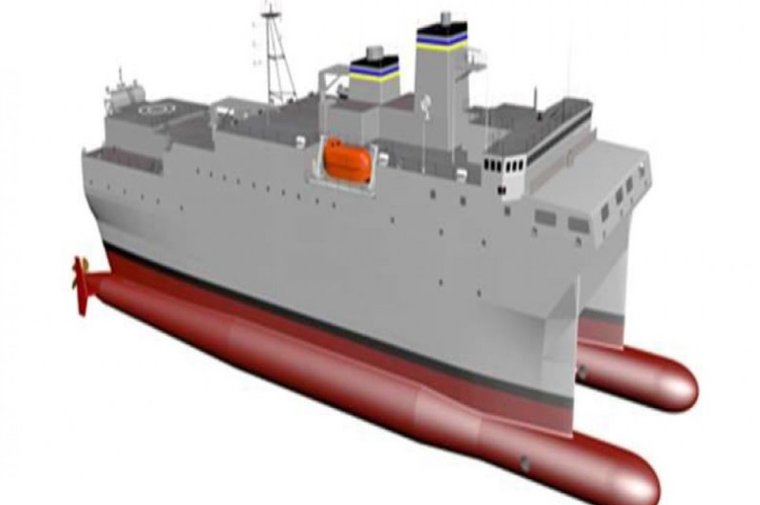Details
More Products & Services
Products & Services
Defence Insight
Shephard Media
Some of the things people like you use Defence Insight for:
- Total addressable market sizing ($)
- Competitor analysis
- Cost analysis
- Market forecasting
- Growth identification
- Increasing closing ratio
- Increasing closing order value
- Estimating product potential
- Calculating sales forecasting
- Supply and demand analysis
- Total addressable market sizing ($)
- Competitor analysis
- Cost analysis
- Market forecasting
- Growth identification
- Increasing closing ratio
- Increasing closing order value
- Estimating product potential
- Calculating sales forecasting
- Supply and demand analysis
Shephard Plus Update
Shephard Media
Shephard Plus is updating in June 2018 with rich new capabilities, and is now one of the most cost-effective and valuable aerospace and defence market intell...
Military Unmanned Systems Handbook
Shephard Media
The Military Unmanned Systems Handbook (Digital Download) is an international guide to the military UV industry and provides detailed information on air, ground and sea (surface & sub-sea) vehicles as well as subsystems. What's included: Unencrypted 390+ page PDF of equipment and supplier information Market summary
Description
The US Navy (USN) has announced the name of its new T-AGOS class of ocean surveillance ships, and the names of the first two vessels within the class.
On 10 January 2025, at the US Naval Academy in Maryland, Secretary of the Navy Carlos Del Toro named the T-AGOS vessels the Explorer class, with the first two ships called the USNS Don Walsh (T-AGOS 25) and the USNS Victor Vescovo (T-AGOS 26) respectively.
The first of the T-AGOS vessels was procured in 2022, and they were designed to be larger, faster surveillance vessels than anything the navy previously had, Del Toro explained. “These ships are essential to maintaining strategic deterrence and operational awareness in the world's oceans,” he added.
Related Articles
US Navy names DDG 146 Arleigh Burke destroyer after former US Senator
In renaming the T-AGOS vessels the Explorer class, Del Toro said the navy was beginning a new tradition, naming vessels after “those who made discoveries under sea, on land, and in the skies above”.
The Explorer class will be operated by the Military Sea Lift Command, and will play a key role in the navy's anti-submarine warfare operations.
Vessels in the class will also be tasked with collecting underwater acoustic data to support the mission of the Integrated Undersea Surveillance System (IUSS) by providing a ship platform capable of anti-submarine acoustic passive and active surveillance.
Ships in the Explorer class will be 110 metres long, with an upper section supported by two struts, reaching down to a set of submerged hulls, similar to those on a submarine.
Those design features will allow the Explorer class to minimise their waterplane area.
The vessels will displace 8,500 tons, and accommodate 68 personnel apiece, and with a top speed of 20 knots will prioritise the stability of their transit.
That high stability will allow them to use the USN's Surveillance Towed-Array Sensor System (SURTASS) equipment to maximise the effectiveness of their data collection.
Related Programmes in Defence Insight
Naval: Combat Management Systems | T-AGOS Surtass Ships (1-5) [USN]
On 10 January 2025, at the US Naval Academy in Maryland, Secretary of the Navy Carlos Del Toro named the T-AGOS vessels the Explorer class, with the first two ships called the USNS Don Walsh (T-AGOS 25) and the USNS Victor Vescovo (T-AGOS 26) respectively.
The first of the T-AGOS vessels was procured in 2022, and they were designed to be larger, faster surveillance vessels than anything the navy previously had, Del Toro explained. “These ships are essential to maintaining strategic deterrence and operational awareness in the world's oceans,” he added.
Related Articles
US Navy names DDG 146 Arleigh Burke destroyer after former US Senator
In renaming the T-AGOS vessels the Explorer class, Del Toro said the navy was beginning a new tradition, naming vessels after “those who made discoveries under sea, on land, and in the skies above”.
The Explorer class will be operated by the Military Sea Lift Command, and will play a key role in the navy's anti-submarine warfare operations.
Vessels in the class will also be tasked with collecting underwater acoustic data to support the mission of the Integrated Undersea Surveillance System (IUSS) by providing a ship platform capable of anti-submarine acoustic passive and active surveillance.
Ships in the Explorer class will be 110 metres long, with an upper section supported by two struts, reaching down to a set of submerged hulls, similar to those on a submarine.
Those design features will allow the Explorer class to minimise their waterplane area.
The vessels will displace 8,500 tons, and accommodate 68 personnel apiece, and with a top speed of 20 knots will prioritise the stability of their transit.
That high stability will allow them to use the USN's Surveillance Towed-Array Sensor System (SURTASS) equipment to maximise the effectiveness of their data collection.
Related Programmes in Defence Insight
Naval: Combat Management Systems | T-AGOS Surtass Ships (1-5) [USN]

Share
Recent Chats
Share via email
Future: handle WhatsApp here
Future: handle LinkedIn here
Future: handle Twitter here
SUBMENU HERE
Share via Chat
Copy Link



